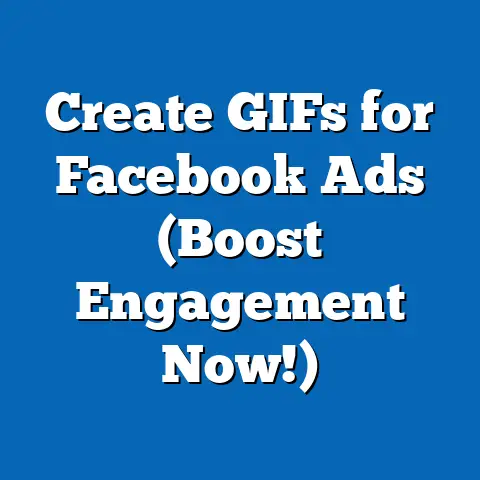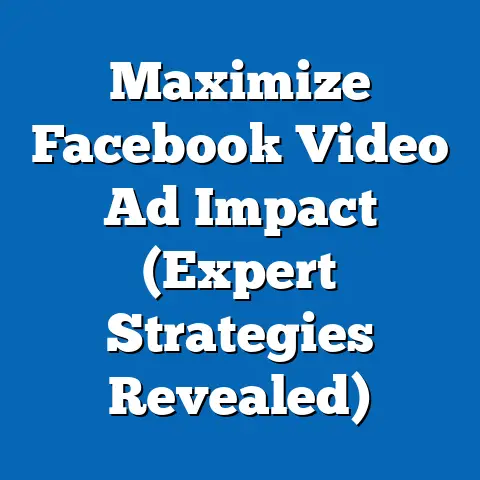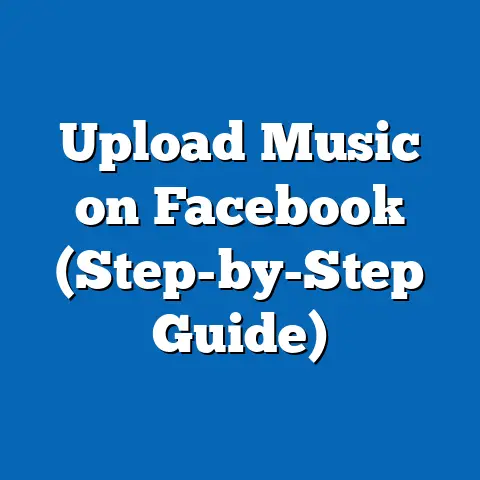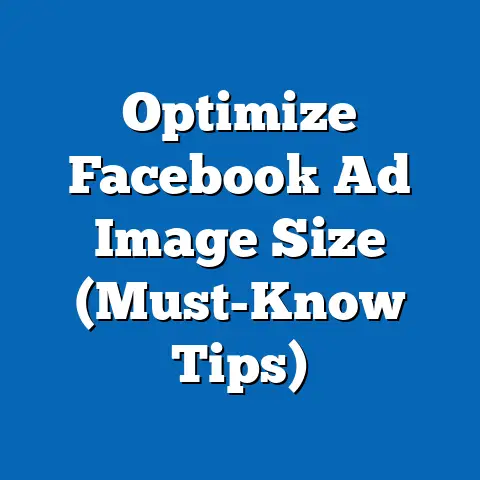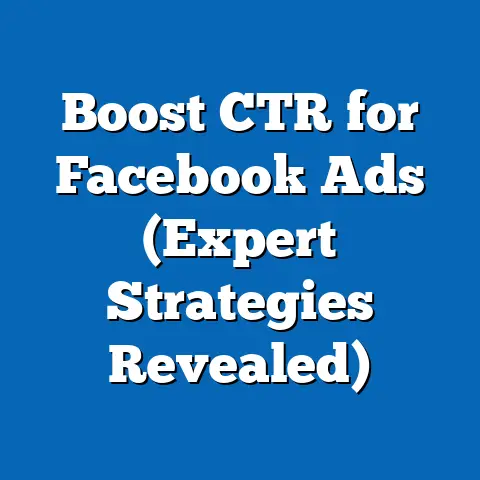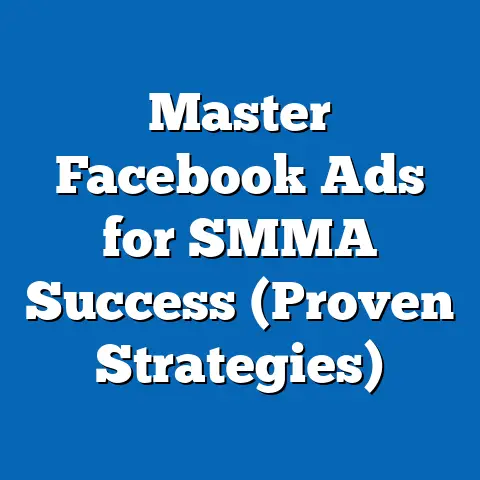Start Running Facebook Ads Today (Proven Strategies Inside)
In a world where digital marketing is both the most accessible and the most complex, why do so many businesses hesitate to dive into Facebook advertising? It’s a paradox I’ve seen play out time and time again. I’ve consulted with countless businesses, from local boutiques to burgeoning e-commerce stores, and the story is often the same: they know Facebook ads should work, but they’re afraid of wasting money or getting lost in the platform’s intricacies.
While Facebook ads might seem straightforward on the surface, the truth is that many businesses struggle to harness their full potential. They throw money at campaigns without a clear strategy, targeting the wrong audiences, or creating ads that simply don’t resonate. This leads to frustration, wasted budgets, and a belief that Facebook ads just don’t work.
But that’s simply not true. The vast opportunities available through Facebook’s advertising platform are undeniable. I’ve personally witnessed the platform transform businesses, driving significant growth and connecting them with customers they never thought possible. The key is understanding and implementing proven strategies. This guide is designed to demystify Facebook advertising, providing you with the knowledge and tools you need to launch successful campaigns and achieve your business goals. So, let’s dive in!
The Power of Facebook Advertising
Facebook isn’t just a social media platform; it’s a global advertising powerhouse. Understanding the sheer scale of its user base is the first step toward appreciating its potential.
As of 2023, Facebook boasts nearly 3 billion monthly active users. Think about that for a second. That’s almost half the world’s population! Even more impressive is the daily active user count, consistently hovering around 2 billion. This means that every single day, billions of people are logging in, scrolling through their feeds, and engaging with content.
These aren’t just random eyeballs. Facebook offers unparalleled targeting capabilities, allowing you to reach specific demographics, geographic locations, interests, and even behaviors. I remember working with a local bakery that wanted to promote their new line of gluten-free pastries. We used Facebook’s targeting to reach people interested in gluten-free living within a 5-mile radius of the bakery. The result? A significant increase in foot traffic and a spike in sales for their new products.
Here’s a breakdown of Facebook’s targeting capabilities:
- Demographic Targeting: Target users based on age, gender, education, job title, relationship status, and more.
- Geographic Targeting: Reach people living in specific countries, regions, cities, or even within a defined radius of a particular address.
- Interest Targeting: Target users based on their interests, hobbies, and the pages they like. This is where you can really drill down and reach people passionate about specific topics.
- Behavioral Targeting: Reach people based on their online behaviors, purchase history, device usage, and more.
- Custom Audiences: Upload your own customer lists (email addresses, phone numbers) to target existing customers or create lookalike audiences (more on this later).
The beauty of Facebook advertising is that it’s not just for large corporations with massive marketing budgets. It’s a viable option for businesses of all sizes, across various industries. Here are just a few examples:
- Local Businesses: Restaurants, salons, gyms, and other local businesses can use Facebook ads to drive foot traffic and build brand awareness within their community.
- E-commerce Brands: Online stores can use Facebook ads to promote their products, drive sales, and retarget customers who have abandoned their carts.
- Service Providers: Consultants, freelancers, and other service providers can use Facebook ads to generate leads and build their client base.
- Non-Profit Organizations: Charities and non-profits can use Facebook ads to raise awareness for their cause, solicit donations, and recruit volunteers.
Key Takeaway: Facebook’s massive user base and granular targeting capabilities make it a powerful advertising platform for businesses of all sizes.
Understanding Facebook Ad Objectives
Before you even think about creating an ad, you need to define your objective. What do you want to achieve with your Facebook advertising campaign? Are you trying to build brand awareness, drive traffic to your website, generate leads, or increase sales?
Facebook offers a range of advertising objectives, each designed to help you achieve a specific goal. Choosing the right objective is crucial because it tells Facebook’s algorithm what you want it to optimize for.
Here’s a breakdown of the most common Facebook ad objectives:
-
Awareness:
- Brand Awareness: Reach people who are likely to remember your brand. This is ideal for new businesses or those looking to increase their overall brand visibility.
- Reach: Show your ad to the maximum number of people within your target audience. This is a good option if you want to get your message out to as many people as possible.
-
Consideration:
- Traffic: Drive traffic to your website, app, or Facebook page. This is a great option if you want to increase website visitors or promote specific content.
- Engagement: Get more people to like, comment, share, or react to your posts. This is ideal for building a community around your brand and increasing social proof.
- App Installs: Encourage people to download and install your mobile app.
- Video Views: Get more people to watch your video content. This is a good option for showcasing your brand’s personality or promoting your products or services.
- Lead Generation: Collect leads directly from Facebook using lead forms. This is ideal for businesses that want to generate leads without sending people to their website.
- Messages: Encourage people to send you messages on Facebook Messenger. This is a great option for providing customer support or answering questions about your products or services.
-
Conversion:
- Conversions: Drive valuable actions on your website, such as purchases, sign-ups, or form submissions. This is ideal for businesses that want to increase sales or generate leads directly from their website.
- Catalog Sales: Promote products from your e-commerce catalog directly on Facebook. This is a great option for e-commerce businesses that want to drive sales and showcase their product offerings.
- Store Traffic: Drive foot traffic to your physical store locations. This is ideal for businesses that want to increase in-store sales and attract local customers.
Awareness:
- Brand Awareness: Reach people who are likely to remember your brand. This is ideal for new businesses or those looking to increase their overall brand visibility.
- Reach: Show your ad to the maximum number of people within your target audience. This is a good option if you want to get your message out to as many people as possible.
Consideration:
- Traffic: Drive traffic to your website, app, or Facebook page. This is a great option if you want to increase website visitors or promote specific content.
- Engagement: Get more people to like, comment, share, or react to your posts. This is ideal for building a community around your brand and increasing social proof.
- App Installs: Encourage people to download and install your mobile app.
- Video Views: Get more people to watch your video content. This is a good option for showcasing your brand’s personality or promoting your products or services.
- Lead Generation: Collect leads directly from Facebook using lead forms. This is ideal for businesses that want to generate leads without sending people to their website.
- Messages: Encourage people to send you messages on Facebook Messenger. This is a great option for providing customer support or answering questions about your products or services.
Conversion:
- Conversions: Drive valuable actions on your website, such as purchases, sign-ups, or form submissions. This is ideal for businesses that want to increase sales or generate leads directly from their website.
- Catalog Sales: Promote products from your e-commerce catalog directly on Facebook. This is a great option for e-commerce businesses that want to drive sales and showcase their product offerings.
- Store Traffic: Drive foot traffic to your physical store locations. This is ideal for businesses that want to increase in-store sales and attract local customers.
Choosing the right objective depends entirely on your business goals. Let’s look at a few examples:
- A new restaurant wants to build brand awareness: They should choose the “Brand Awareness” objective to reach people in their local area and make them aware of their existence.
- An e-commerce store wants to drive sales: They should choose the “Conversions” or “Catalog Sales” objective to encourage people to purchase their products.
- A service provider wants to generate leads: They should choose the “Lead Generation” objective to collect leads directly from Facebook.
I once worked with a local real estate agent who was struggling to generate leads. They were running Facebook ads with the “Traffic” objective, sending people to their website. However, their website wasn’t optimized for lead capture, and they weren’t seeing the results they wanted. We switched their objective to “Lead Generation” and created a simple lead form directly on Facebook. The result? A significant increase in leads and a much higher return on ad spend.
Key Takeaway: Choosing the right Facebook ad objective is crucial for achieving your business goals. Carefully consider what you want to achieve with your campaign and select the objective that aligns best with your goals.
Crafting Compelling Ad Content
You’ve chosen your objective and targeted your audience. Now it’s time to create compelling ad content that grabs attention and drives action. This is where your creativity comes into play.
Effective ad copy is essential for capturing attention and conveying your message. Here are some key elements to consider:
- Headline: Your headline is the first thing people will see, so it needs to be attention-grabbing and concise. Use strong verbs, highlight benefits, and create a sense of urgency. For example, instead of “Learn More About Our Services,” try “Transform Your Business with Our Expert Consulting – Book a Free Consultation Today!”
- Description: Your description provides more detail about your offer and explains why people should take action. Keep it concise and focused on the benefits. Use bullet points to highlight key features or benefits.
- Call-to-Action (CTA): Your CTA tells people what you want them to do. Use clear and direct language, such as “Shop Now,” “Learn More,” “Sign Up,” or “Contact Us.”
Visuals are just as important as ad copy. In fact, many people are more likely to notice an image or video than they are to read text. Here are some tips for selecting eye-catching visuals:
- Use high-quality images or videos: Avoid blurry or pixelated images. Use professional-looking visuals that are relevant to your offer.
- Choose visuals that are visually appealing: Use bright colors, interesting compositions, and images that evoke emotion.
- Use visuals that are relevant to your target audience: Consider what your target audience will find appealing and choose visuals that resonate with them.
- Test different visuals: Experiment with different images and videos to see what performs best.
A/B testing is a powerful technique for optimizing your ad content. It involves creating two or more versions of an ad and testing them against each other to see which performs best.
Here’s how to conduct A/B testing:
- Choose a variable to test: This could be your headline, description, image, CTA, or audience targeting.
- Create two or more versions of your ad: Change only one variable at a time so you can accurately measure the impact of that change.
- Run your ads and track the results: Monitor key metrics such as CTR, CPC, and conversion rate.
- Analyze the results and choose the winning ad: Once you have enough data, analyze the results and choose the ad that performed best.
- Repeat the process: Continue testing and optimizing your ads to improve performance over time.
I once worked with an e-commerce store that was struggling to get sales from their Facebook ads. They were using the same image and ad copy for all of their campaigns. We decided to conduct an A/B test to see if we could improve performance. We created two versions of their ad: one with a product image and one with a lifestyle image. The lifestyle image significantly outperformed the product image, resulting in a 30% increase in sales.
Key Takeaway: Crafting compelling ad content is essential for capturing attention and driving action. Use strong headlines, concise descriptions, clear CTAs, and eye-catching visuals. Conduct A/B testing to optimize your ad content and improve performance over time.
Setting Up Your Facebook Ad Campaign
Now that you’ve crafted compelling ad content, it’s time to set up your Facebook ad campaign. This involves navigating the Facebook Ads Manager and configuring your campaign settings.
Here’s a step-by-step guide to creating a Facebook ad campaign:
- Access Ads Manager: Go to facebook.com/adsmanager and log in to your account.
- Create a new campaign: Click on the “Create” button to create a new campaign.
- Choose your objective: Select the advertising objective that aligns with your business goals (as discussed in Section 2).
- Name your campaign: Give your campaign a descriptive name that will help you easily identify it later.
- Set your budget: Choose between a daily budget or a lifetime budget. A daily budget is the average amount you’re willing to spend each day, while a lifetime budget is the total amount you’re willing to spend over the entire duration of your campaign.
- Define your audience: Choose your target audience based on demographics, interests, behaviors, and more. You can also create custom audiences based on your own customer data.
- Choose your ad placements: Select where you want your ads to appear on Facebook, Instagram, Audience Network, and Messenger. You can choose automatic placements (recommended for beginners) or manual placements (which gives you more control).
- Set your bidding strategy: Choose how you want to bid for ad placements. You can choose automatic bidding (where Facebook automatically bids on your behalf) or manual bidding (where you set your own bids).
- Create your ad: Choose your ad format (image, video, carousel, etc.) and upload your visuals and ad copy.
- Review and publish your campaign: Double-check all of your settings and click on the “Publish” button to launch your campaign.
Budget setting is a critical aspect of Facebook advertising. You need to set a budget that’s high enough to generate meaningful results but not so high that you’re wasting money.
Here are some tips for setting your budget:
- Start small: If you’re new to Facebook advertising, start with a small budget and gradually increase it as you see results.
- Consider your target audience size: The larger your target audience, the more you’ll need to spend to reach them.
- Factor in your conversion rate: If your conversion rate is low, you’ll need to spend more to generate the same number of conversions.
- Monitor your results and adjust your budget accordingly: Keep a close eye on your campaign performance and adjust your budget as needed.
The Facebook Pixel is a small piece of code that you place on your website to track conversions and optimize your campaigns. It allows you to track which ads are driving the most valuable actions on your website, such as purchases, sign-ups, or form submissions.
Here are some benefits of using the Facebook Pixel:
- Track conversions: See which ads are driving the most valuable actions on your website.
- Optimize your campaigns: Use conversion data to optimize your campaigns and improve performance.
- Retarget website visitors: Show ads to people who have visited your website but haven’t yet converted.
- Create lookalike audiences: Create audiences that are similar to your existing customers or website visitors.
Key Takeaway: Setting up your Facebook ad campaign involves navigating the Ads Manager, configuring your campaign settings, setting your budget, and installing the Facebook Pixel.
Analyzing and Optimizing Campaign Performance
Once your campaign is up and running, it’s crucial to monitor its performance and make data-driven decisions to improve results. This involves analyzing key metrics and making adjustments to your campaign settings.
Here are some key metrics to monitor:
- Reach: The number of people who saw your ad.
- Impressions: The number of times your ad was displayed.
- Frequency: The average number of times each person saw your ad.
- Click-Through Rate (CTR): The percentage of people who clicked on your ad after seeing it.
- Cost Per Click (CPC): The average cost you paid for each click on your ad.
- Cost Per Mille (CPM): The average cost you paid for 1,000 impressions of your ad.
- Conversion Rate: The percentage of people who completed a desired action (such as a purchase or sign-up) after clicking on your ad.
- Cost Per Acquisition (CPA): The average cost you paid for each conversion.
- Return on Ad Spend (ROAS): The amount of revenue you generated for every dollar you spent on advertising.
Interpreting Facebook Ads Manager reports can be overwhelming at first, but it’s essential for understanding your campaign performance.
Here are some tips for interpreting your reports:
- Focus on the metrics that matter most to your business: Don’t get bogged down in vanity metrics. Focus on the metrics that directly impact your bottom line, such as conversion rate, CPA, and ROAS.
- Compare your results to your goals: Are you meeting your goals for reach, impressions, CTR, and conversions? If not, you need to make adjustments to your campaign.
- Look for trends over time: Are your metrics improving or declining? Identify trends and patterns to understand what’s working and what’s not.
- Segment your data: Segment your data by demographics, interests, placements, and other factors to identify which segments are performing best.
I worked with a local clothing store that was struggling to get a positive ROAS from their Facebook ads. They were running ads to a broad audience and weren’t tracking their conversions properly. We installed the Facebook Pixel on their website and started tracking their sales. We then segmented their data by demographics and discovered that their ads were performing much better with women aged 25-44. We narrowed their targeting to focus on this demographic, and their ROAS increased significantly.
Key Takeaway: Analyzing and optimizing your campaign performance is crucial for maximizing your ROI. Monitor key metrics, interpret your reports, and make data-driven decisions to improve your results.
Advanced Strategies for Facebook Advertising
Once you’ve mastered the basics of Facebook advertising, you can start exploring more advanced strategies to take your campaigns to the next level.
Lookalike audiences allow you to reach new people who are similar to your existing customers or website visitors. This is a powerful way to expand your reach and find new customers who are likely to be interested in your products or services.
To create a lookalike audience, you need to provide Facebook with a source audience, such as your customer list, website visitors, or Facebook page fans. Facebook will then analyze the characteristics of your source audience and create a new audience of people who share similar traits.
Retargeting is a strategy that allows you to show ads to people who have previously interacted with your business, such as visiting your website, watching your videos, or engaging with your Facebook page. This is a highly effective way to re-engage potential customers and encourage them to take action.
I had a client who owned an online art supply store. We implemented a retargeting campaign to show ads to people who had viewed specific product pages on their website but hadn’t added the items to their cart. The ads featured the exact items they had viewed, along with a special discount code. This resulted in a significant increase in sales and a much higher conversion rate.
Dynamic ads are a type of ad that automatically shows the most relevant products to each individual user based on their browsing history and interests. This is a powerful tool for e-commerce businesses that want to personalize their advertising and drive sales.
For example, if someone visits your website and views a specific product, dynamic ads can automatically show them that product in their Facebook feed. This is a highly effective way to remind potential customers about your products and encourage them to make a purchase.
Integrating Facebook ads with other marketing channels can create a more holistic and effective marketing strategy.
Here are some ways to integrate Facebook ads with other channels:
- Email marketing: Use Facebook ads to grow your email list and then use email marketing to nurture those leads and drive sales.
- Content marketing: Use Facebook ads to promote your blog posts, videos, and other content.
- Search engine optimization (SEO): Use Facebook ads to drive traffic to your website and improve your SEO rankings.
- Offline marketing: Use Facebook ads to promote your offline events and promotions.
Key Takeaway: Advanced strategies such as lookalike audiences, retargeting, dynamic ads, and integrated marketing can help you take your Facebook advertising to the next level and achieve even greater results.
Conclusion
Facebook advertising might seem daunting at first, but the strategies I’ve outlined provide a clear path to success. From understanding the power of the platform and choosing the right objectives to crafting compelling content and analyzing your results, you now have the knowledge you need to launch successful campaigns.
Don’t let fear or uncertainty hold you back. The best time to start running Facebook ads is today. With the right approach, you can unlock significant growth for your business, connect with new customers, and achieve your marketing goals. So, take the leap, implement these strategies, and watch your business thrive!

